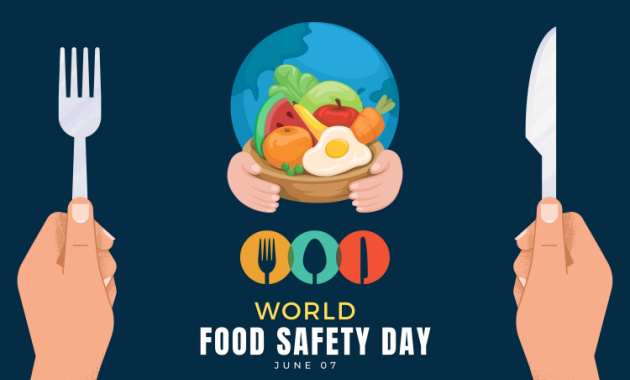
Every year on June 7th, The World Health Organisation (WHO) observes World Food Safety Day to raise awareness and encourage efforts to prevent, detect, and control foodborne hazards that can have various negative impacts. According to a recent WHO report, one out of every ten people worldwide is affected by foodborne diseases every year. Unsafe food can cause a variety of health issues, making food safety a crucial concern. The objective of this day is to emphasize the importance of ensuring safe food production and consumption at all stages.
Here are 6 important tips that must be observed to ensure safe meals:
1. Clean Hands, Safe Health
Food poisoning-causing germs can linger in various areas of your kitchen and spread. To prevent contamination, it is important to wash your hands with soap and warm water for at least 20 seconds before, during, and after preparing food, as well as after handling raw meat, poultry, seafood, or eggs.
If you wash your hands properly, you can reduce your chances of getting 1 in 3 diarrheal illnesses and 1 in 5 respiratory infections such as the flu or common cold.[1]
Check out our extensive collection of handwashes and sanitizers.
2. Wipe Out All Germs
Make sure your kitchen surfaces are kept clean and sanitized, and it’s important to clean utensils, cutting boards, and countertops with hot, soapy water after every use. Additionally, rinse your fruits and vegetables under running water to avoid the spread of harmful pathogens.
3. Separate With Care
It is important to keep certain types of food separate to prevent contamination and maintain good health. Specifically, raw meat, poultry, and seafood should be kept away from other foods. In the refrigerator, these items should be stored in sealed containers or wrapped securely to prevent leakage onto other foods. It is also important to use separate cutting boards or plates for raw meat, poultry, and seafood versus bread, and other uncooked foods.
4. Check for Any Spoilage
Make sure the ingredients you use are fresh and clean by checking for any spoilage or damage before cooking or eating. Refuse to use questionable food items and keep track of freshness by labeling items with dates and avoiding expired food.
5. Cook to the Right Temperature
To ensure the safety of cooked food, it is important to cook it properly to kill harmful germs. When thawing frozen food, it should be done in the refrigerator, cold water, or microwave, as leaving it on the counter can result in bacterial growth. It is important to follow package directions for cooking and heating, including letting microwaved food stand for a few minutes and stirring it in the middle of heating. Some commercially prepared frozen foods may have specific heating instructions that should be followed.
6. Refrigerate Promptly
To ensure food safety, it is important to keep your refrigerator temperature at or below 5°C and your freezer temperature below -15°C. Perishable food such as meat, seafood, dairy, cut fruit, some vegetables, and cooked leftovers should be refrigerated at or below 4°C within 2 hours or within 1 hour if exposed to high temperatures (above 32°C). After meals, it is important to store leftovers promptly to prevent bacterial growth.
Final Takeaway!
It is essential that we prioritize good hygiene practices due to the harmful effects of unclean and unsafe foods on our health. Consuming contaminated meals can lead to food-borne diseases that negatively impact our well-being. To combat this issue, it is crucial to ensure that the food we consume is free from harmful microorganisms.
Additionally, it is important to not ignore any symptoms of illness and seek medical attention promptly to prevent the spread of disease. Talk to an expert now!
(The article is reviewed by Monalisa Deka, Senior Health Content Editor)
References
1. CDC. Handwashing in Communities: Clean Hands Save Lives. Available online: https://www.cdc.gov/handwashing/when-how-handwashing.html
2. CDC.Four Steps to Food Safety: Clean, Separate, Cook, Chill. Available online:
https://www.cdc.gov/foodsafety/keep-food-safe.html
3. WHO. A Guide to World Food Safety Day 2023: food standards save lives. Available online:
https://www.who.int/publications/i/item/WHO-HEP-NFS-AFS-2023.6